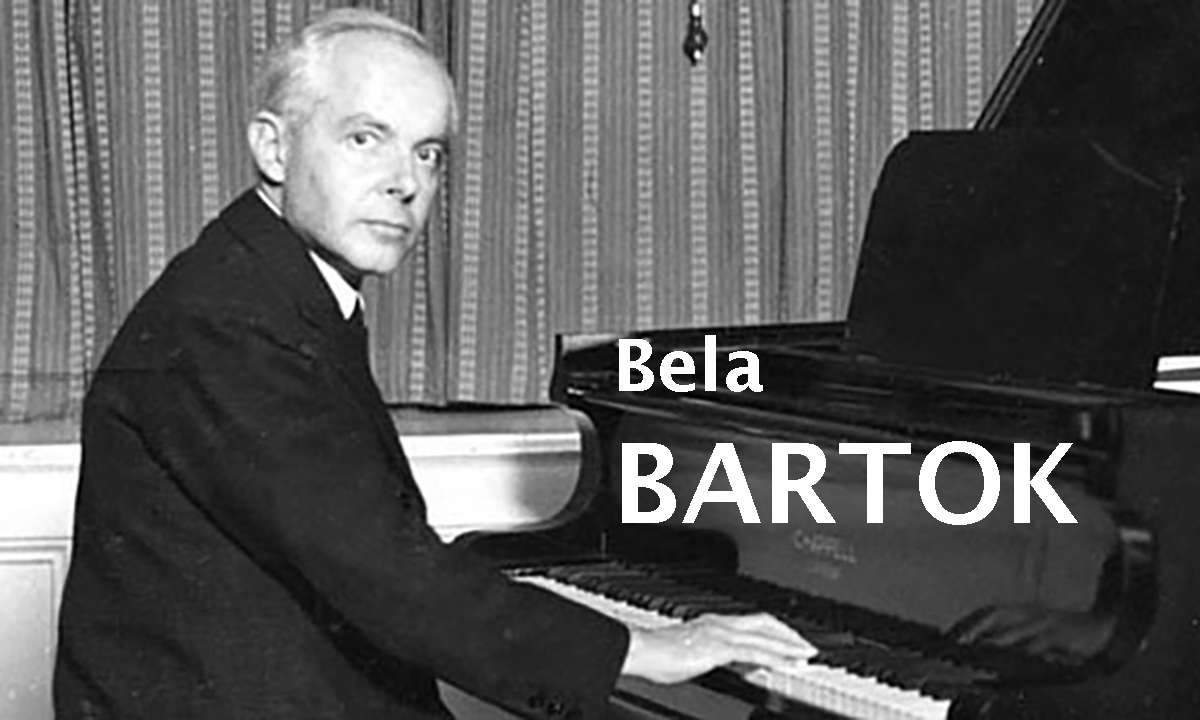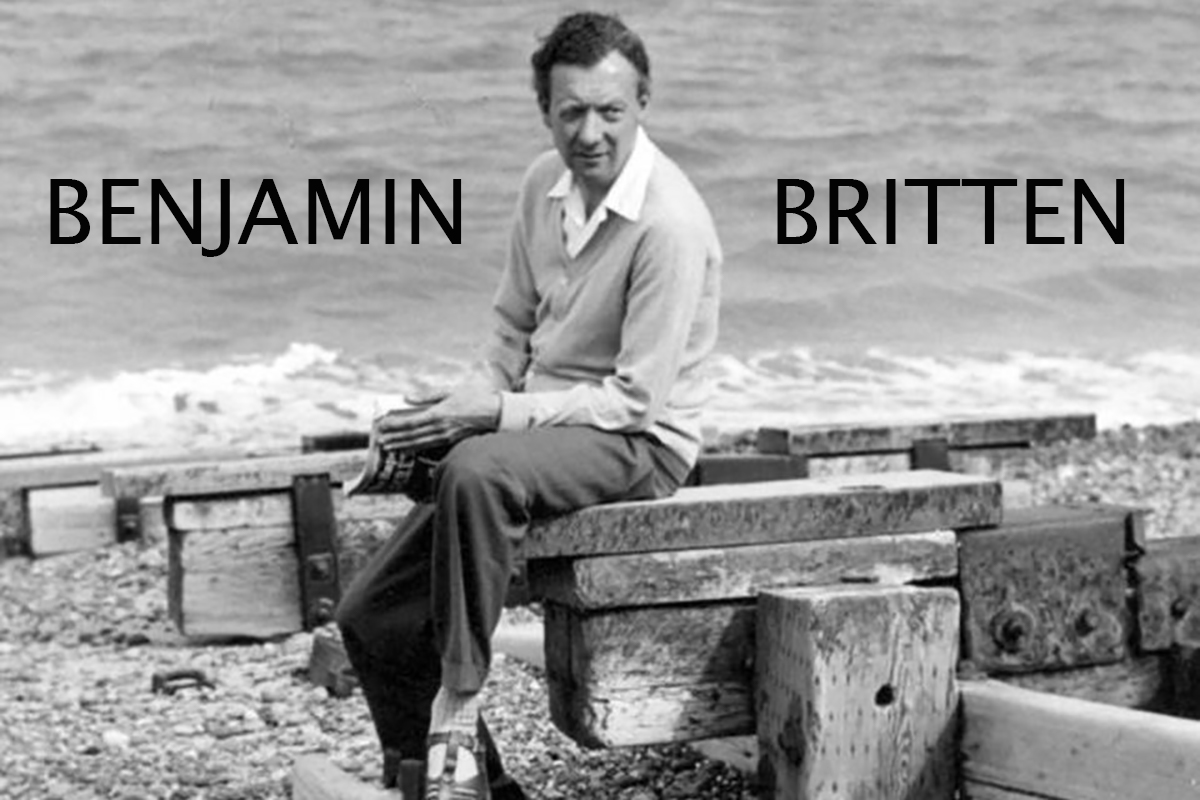Benjamin Britten (1913-1976)
Introduction and Rondo alla Burlesca, Op. 23 No. 1
Muzurka elegiaca, Op. 23 No. 2
———————
Igor Stravinsky (1882-1971)
———————-
Bela Bartok (1881-1945)
Sonata for 2 Pianos and Percussion
———————
Sviatoslav Richter & Vassili Lobanov (Pianos)
Valery Barkov & Valentin Snegirev (Percussion)
Recorded live: Tours, France, July 1985
———————
ONE-SENTENCE REVIEW:
There is not a lot of music written for two pianos – at least in the mainstream repertoire – but this recording is the cream of the crop. Highly recommended!
ORIGINAL LINER NOTES – Paul Griffiths
Challenge Of The Two-Piano Medium
From Debussy to Legeti and beyond, composers in the twentieth century have been attracted to the two-piano medium by the strict rhythm it imposes, by the complexity of keyboard texture and harmony it makes possible, and also for practical reasons.
Stravinsky and Bartok, for instance, were both in difficult times writing pieces they could perform with members of the family: Stravinsky’s younger son Soulima was emerging as a concert pianist; Bartok’s work was composed for himself and his second wife, Ditta Pasztory.
Stravinsky wrote the first movement of his concerto in 1931, but then the Duo concertant and “Persephone” intervened before the work was completed in 1934-35. In a lecture given before the first performance in Paris on November 21, 1935, the composer justified his title on the grounds that here “two pianos assume a concertante role in relation to one another,” and observed that their “concertante contest, by its very nature, requires a contrapuntal style.”
But the duel also results in a duet symphony, beginning with a concentrated sonata ‘Allegro in E minor’ around a more relaxed interlude in B-flat major. The eighteenth-century feel of that interlude is differently continued in the slow movement, which Stravinsky’s lecture relates to Classical nocturnes and cassations; the key is G major – with a central section in D flat.
Then the finale is in two parts, originally placed in reverse order: the definitive positioning means that the four variations precede their theme, which arrives in the prelude and is elaborated in the fugue. The variations are unstable in tonality, and their thematic distensions might suggest some early Shoenbergian influence, but the prelude and fugue are in D major, lifted to E major in the coda.
Bartok’s sonata, following in 1937, evidently pays its respects to Stravinsky, but to “Les noces” rather than to the concerto: the percussion complement is similar, with timpani and xylophone again married to the extreme ends of the keyboard, and there are similarities too of registration, of pulsed movement, and of block-style structuring.
However, Bartok combines this last feature with a driving forward sweep, especially in the first allegro. After the slow introduction it presents three themes, in different interpretations of 9/8, the first based on the emphatic rhythm of three crotchets followed by three quavers; the second a sophisticated Bulgarian dance with units of 4 + 2 +3, the third marked by initial leaping sixths and then iambic patterns.
The tightly developed recapitulation has the themes in the order 2 (in inversion), 3 (in fugue), 1 (as coda). After this comes a slow movement whose nocturnal imagery is not conventional but particular to Bartok, and a finale which bursts out of chromaticism into diatonic brightness, using a scale Bartok had found in Roumanian fold music (C, D, E, F sharp, G, A, B-flat, C). In form it is a sonata rondo, full of games with inversion, canon, and instrumentation.
The two Britten pieces, the Introduction and Rondo, alla burlesca and the Mazurka elegiaca, date from 1940 and 1941, respectively, the second being an elegy for Paderewski and a memory of his Chopin-playing.
TRACK LISTING:
Benjamin Britten (1913-1976) – Introduction and Rondo all Burlesca, Op. 23 No. 1
- Grave – 3:19
- Allegro moderato, ma con spirito – Grave – Allegro con spirito – 6:02
- Mazurka elegiaca, Op. 23 No. 2 – 7:12
Igor Stravinsky (1881-1972) – Concerto for 2 Pianos
- Con moto – 6:31
- Notturno (adagietto) – 5:24
- Quattro variazioni – 4:29
- Prelude e Fuga – 5:01
Bela Bartok (1881 – 1945) – Sonata for 2 Pianos and Percussion
- Assai lento – Allegro molto – 15:09
- Lento, Ma non troppo – 7:13
- Allegro non troppo – 6:56
FINAL THOUGHT:
It’s hard to ever hear pieces like this performed live – so these recordings are golden and this one is one of the most golden. Dueling pianists have so much fun in these concerts just having each other to play off of – I’m surprised this music isn’t more popular – like the piano bars where it’s so much more fun with two pianos! Plus, man, that Bartok first movement with the JUMP SCARES 50 years before Texas Chainsaw Massacre is just awesome.
 Emily Sachs – President – Manka Music Group (A division of Manka Bros. Studios – The World’s Largest Media Company
Emily Sachs – President – Manka Music Group (A division of Manka Bros. Studios – The World’s Largest Media Company







This made Campbell think and he decided to change his plans. 무료웹툰사이트
I precisely had to thank you so much yet again. I do not know the things I might have implemented in the absence of the actual creative ideas shared by you on such a area of interest. It absolutely was an absolute frightful crisis in my opinion, but finding out your professional approach you solved it took me to leap with delight. I am happy for this guidance as well as wish you comprehend what an amazing job you were undertaking teaching many others through a blog. I know that you’ve never encountered all of us. Iptv uk
The White House said Biden and McCarthy spoke earlier in the day as they struggled to avert a financial precipice which threatened to throw millions of people out of jobs and risk a global meltdown. 토토주소
“I Went Vegan for 10 Weeks and This Is What Happened to My Body and Mindset”
먹튀커뮤니티